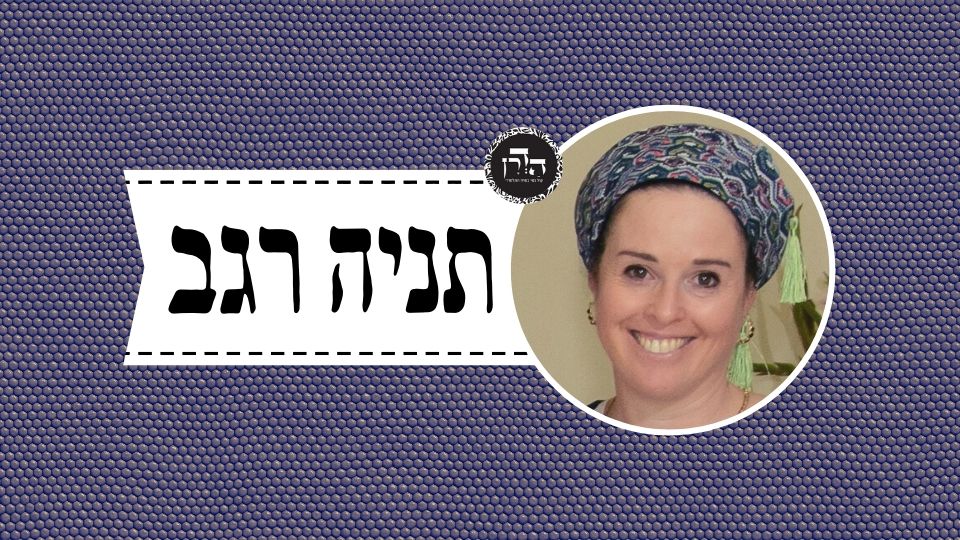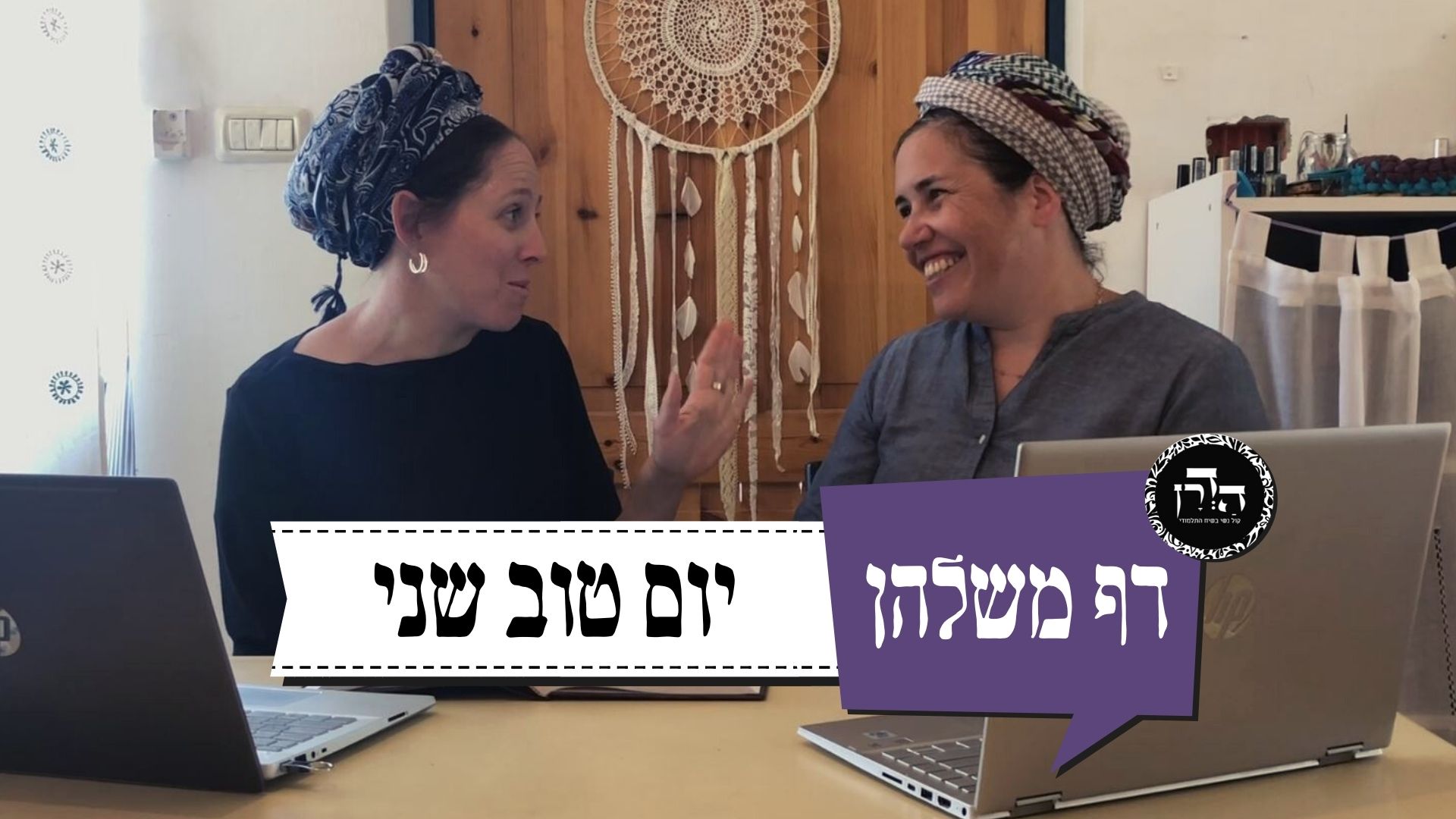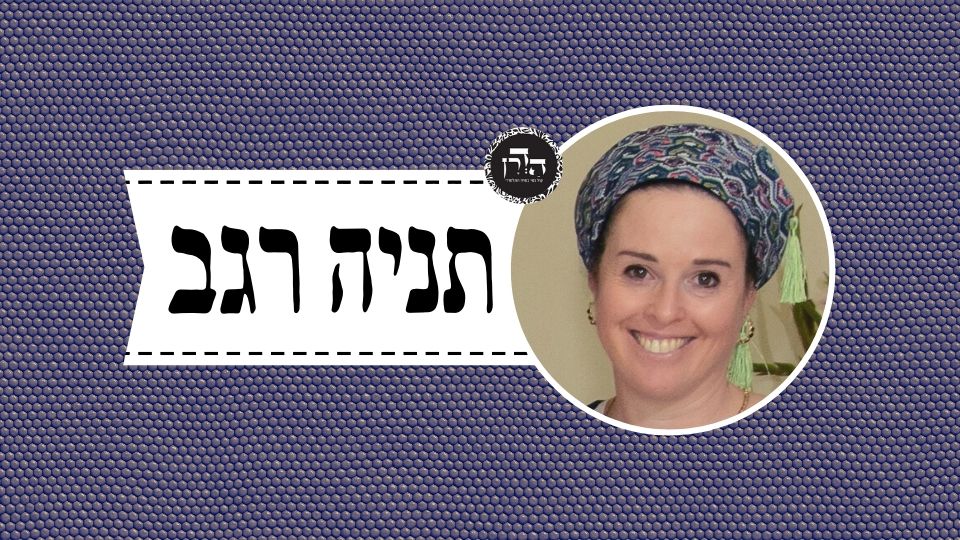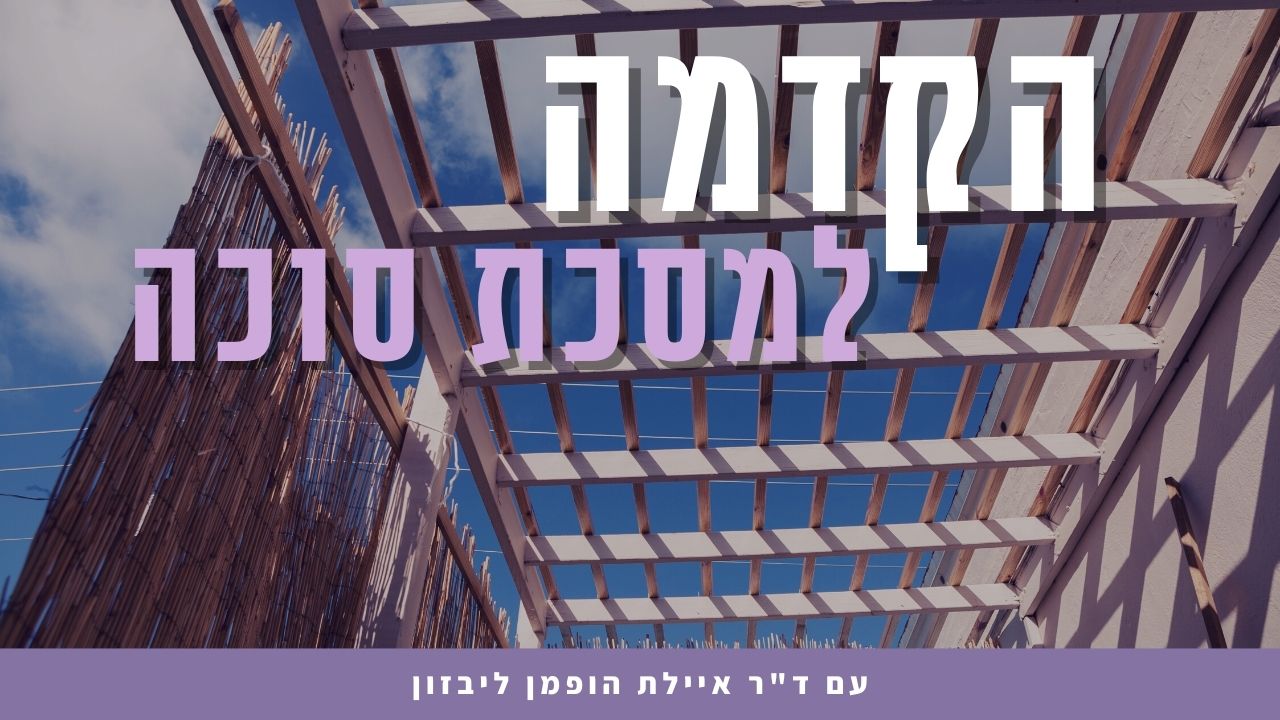סוכה יח
וּמוֹדֶה רַבִּי מֵאִיר שֶׁאִם יֵשׁ בֵּין נֶסֶר לְנֶסֶר כִּמְלֹא נֶסֶר — שֶׁמַּנִּיחַ פְּסָל בֵּינֵיהֶם וּכְשֵׁרָה.
And Rabbi Meir concedes that if there is between one board and another board a gap the complete width of a board, then one places fit roofing from the waste of the threshing floor and the winepress, and the sukka is fit.
בִּשְׁלָמָא לְמַאן דְּאָמַר בֵּין בָּאֶמְצַע בֵּין מִן הַצַּד בְּאַרְבַּע אַמּוֹת — מִשּׁוּם הָכִי כְּשֵׁרָה. אֶלָּא לְמַאן דְּאָמַר בָּאֶמְצַע בְּאַרְבָּעָה, אַמַּאי כְּשֵׁרָה?
The Gemara clarifies: Granted, according to the one who said: Both along the side and in the center a sukka is rendered unfit with a measure of four cubits of unfit roofing, it is due to that reason that the sukka under discussion is fit, as none of the boards is four cubits wide. However, according to the one who said that a sukka is rendered unfit with a measure of four handbreadths of unfit roofing in the center, why is the sukka fit? Each board is capable on its own of rendering the sukka unfit.
אָמַר רַב הוּנָא בְּרֵיהּ דְּרַב יְהוֹשֻׁעַ: הָכָא בְּסוּכָּה דְּלָא הָוְיָא אֶלָּא שְׁמֹנֶה מְצוּמְצָמוֹת עָסְקִינַן, וְיָהֵיב נֶסֶר וּפְסָל וְנֶסֶר וּפְסָל וְנֶסֶר וּפְסָל מֵהַאי גִּיסָא, וְנֶסֶר וּפְסָל וְנֶסֶר וּפְסָל וְנֶסֶר וּפְסָל מֵהַאי גִּיסָא,
Rav Huna, son of Rav Yehoshua, said: Here, we are dealing with a sukka that is exactly eight cubits, i.e., forty-eight handbreadths, wide, and one began placing the roofing from the side. And he places a four-handbreadth board and then four handbreadths of waste, and another board and waste, and a board and waste, from this side, so that the total measure of roofing from that side is twenty-four handbreadths. And then a beam and waste, a beam and waste, and a beam and waste, from that side, so that the total measure of roofing from that side is twenty-four handbreadths.
דְּהָווּ לְהוּ שְׁנֵי פְסָלִין בָּאֶמְצַע, וְאִיכָּא הֶכְשֵׁר סוּכָּה בָּאֶמְצַע.
The result is that the sukka has two four-handbreadth stretches of waste in the middle of the sukka, totaling eight handbreadths. In that case, there is the minimum measure of fit roofing required for fitness of a sukka in the middle, and everyone agrees that the unfit roofing in the rest of the sukka cannot render it unfit. Since the unfit roofing measures less than four cubits on either side, the sukka is fit both according to the principle of curved wall and according to the opinion that unfit roofing renders the sukka unfit with four cubits.
אָמַר אַבָּיֵי: אֲוִיר שְׁלֹשָׁה בְּסוּכָּה גְּדוֹלָה וּמִיעֲטוֹ, בֵּין בְּקָנִים בֵּין בְּשַׁפּוּדִין — הָוֵי מִיעוּט. בְּסוּכָּה קְטַנָּה, בְּקָנִים — הָוֵי מִיעוּט, בְּשַׁפּוּדִין — לָא הָוֵי מִיעוּט.
§ Abaye said: If there is space measuring three handbreadths in a large sukka, which is defined as one larger than seven by seven handbreadths, and one diminished the space, whether he did so with branches, fit for roofing, or whether he did so with metal skewers, unfit roofing, it is an effective diminution, as there is neither sufficient space nor sufficient unfit roofing to render the sukka unfit. However, in a small sukka, if one diminished the space with branches it is an effective diminution; if he diminished the space with skewers, it is not an effective diminution and the sukka is unfit. The three handbreadths of skewers, while insufficient to render the sukka unfit, diminish the fit area of the sukka to the point that the measure that remains does not constitute a fit sukka.
וְהָנֵי מִילֵּי מִן הַצַּד. אֲבָל בָּאֶמְצַע — פְּלִיגִי בַּהּ רַב אַחָא וְרָבִינָא, חַד אָמַר: יֵשׁ לָבוּד בָּאֶמְצַע, וְחַד אָמַר: אֵין לָבוּד בָּאֶמְצַע.
The Gemara notes: And this applies only if the space is along the side of the sukka, in which case the principle of lavud applies. However, if the space is in the center of the sukka, Rav Aḥa and Ravina disagree with regard to the ruling. One said: The principle of lavud is applied even in the center of the sukka. And one said: The principle of lavud is not applied in the center of the sukka. Even if one diminished the space, the two sides of the roofing are not considered joined.
מַאי טַעְמֵיהּ דְּמַאן דְּאָמַר יֵשׁ לָבוּד בָּאֶמְצַע — דְּתַנְיָא: קוֹרָה הַיּוֹצְאָה מִכּוֹתֶל זֶה וְאֵינָהּ נוֹגַעַת בְּכוֹתֶל אַחֵר, וְכֵן שְׁתֵּי קוֹרוֹת, אַחַת יוֹצְאָה מִכּוֹתֶל זֶה וְאַחַת יוֹצְאָה מִכּוֹתֶל אַחֵר וְאֵינָן נוֹגְעוֹת זוֹ בָּזוֹ — פָּחוֹת מִשְּׁלֹשָׁה, אֵינוֹ צָרִיךְ לְהָבִיא קוֹרָה אַחֶרֶת. שְׁלֹשָׁה — צָרִיךְ לְהָבִיא קוֹרָה אַחֶרֶת.
The Gemara explains: What is the rationale for the opinion of the one who said: The principle of lavud is applied even in the center of the sukka? It is as it is taught in the Tosefta: With regard to a cross beam of the merging of alleyways that projects from this wall of an alleyway but does not touch the other opposite wall, and similarly, with regard to two cross beams, one projecting from this wall and one projecting from the other opposite wall and they do not touch each other, if there is a gap of less than three handbreadths between the beam and the wall or between the two beams respectively, one need not bring another cross beam to render the alleyway fit for one to carry within it, as they are considered joined based on the principle of lavud. However, if there is a gap of three handbreadths, one must bring another cross beam. Apparently, the principle of lavud is applied even in the center.
וְאִידַּךְ — שָׁאנֵי קוֹרוֹת דְּרַבָּנַן.
The Gemara asks: And the other Sage, who holds that lavud does not apply in the center, how would he explain the Tosefta? The Gemara clarifies that he would say that beams are different because the prohibition against carrying in an alleyway is a decree by rabbinic law, and it is a rabbinic ordinance that beams may be placed at the entrance to the alleyway to permit carrying therein, the Sages were lenient. Therefore, proof cannot be cited from the case of the beams with regard to other situations.
מַאי טַעְמָא דְּמַאן דְּאָמַר אֵין לָבוּד בָּאֶמְצַע — דִּתְנַן: אֲרוּבָּה שֶׁבַּבַּיִת וּבָהּ פּוֹתֵחַ טֶפַח, טוּמְאָה בַּבַּיִת — כּוּלּוֹ טָמֵא, מַה שֶּׁכְּנֶגֶד אֲרוּבָּה — טָהוֹר. טוּמְאָה כְּנֶגֶד אֲרוּבָּה — כָּל הַבַּיִת כּוּלּוֹ טָהוֹר.
What is the reason for the opinion of the one who said: The principle of lavud does not apply in the center? It is as we learned in a mishna: In the case of a skylight in the roof of a house whose opening is one square handbreadth, if there is a source of ritual impurity imparted by a corpse inside the house, all the objects in the entire house become ritually impure, as the legal status of the roof is that of a tent over a corpse. However, the objects that are directly opposite the skylight are ritually pure, as the roof does not cover that part of the house. If the source of ritual impurity is itself situated aligned with the skylight, all the objects in the entire house are ritually pure, as there is no roof over the source of impurity.
אֵין בָּאֲרוּבָּה פּוֹתֵחַ טֶפַח, טוּמְאָה בַּבַּיִת — כְּנֶגֶד אֲרוּבָּה, טָהוֹר. טוּמְאָה כְּנֶגֶד אֲרוּבָּה — כָּל הַבַּיִת כּוּלּוֹ טָהוֹר.
If the skylight does not have an opening of a square handbreadth and there is ritual impurity in the house, the objects opposite the skylight remain ritually pure. If the source of ritual impurity is aligned with the skylight, the objects in the entire house are ritually pure. Apparently, the principle of lavud is not applied in the center; if it were, all the objects in the house would become ritually impure regardless of the location of the source of impurity. The opening of the skylight should be considered closed, as the distance between the two sides of its opening is less than three handbreadths.
וְאִידַּךְ? שָׁאנֵי הִלְכוֹת טוּמְאָה דְּהָכִי גְּמִירִי לְהוּ.
The Gemara asks: And the other Sage, who holds that lavud applies in the center, how would he explain the mishna? The Gemara answers: The halakhot of ritual impurity are different, as that is the way they learned them through tradition. The halakhot of tents and ritual impurity are halakhot transmitted to Moses from Sinai. Therefore, their details are unique, and other areas of halakha cannot be derived from them.
דָּרֵשׁ רַבִּי יְהוּדָה בַּר אִלְעַאי: בַּיִת שֶׁנִּפְחַת וְסִיכֵּךְ עַל גַּבָּיו — כְּשֵׁרָה. אָמַר לְפָנָיו רַבִּי יִשְׁמָעֵאל בְּרַבִּי יוֹסֵי: רַבִּי, פָּרֵישׁ, כָּךְ פֵּירַשׁ אַבָּא: אַרְבַּע אַמּוֹת פְּסוּלָה, פָּחוֹת מֵאַרְבַּע אַמּוֹת כְּשֵׁרָה.
§ Rabbi Yehuda bar Elai taught: A house that was breached and one roofed over it is a fit sukka. Rabbi Yishmael, son of Rabbi Yosei, said to him: My teacher, explain your opinion. Rabbi Yehuda bar Elai said that this is how my father explained it: If the ceiling between the wall and the breach is four cubits long, the sukka is unfit. If it is less than four cubits, the sukka is fit.
דָּרֵשׁ רַבִּי יְהוּדָה בַּר אִלְעַאי: אַבְרוּמָא שַׁרְיָא. אֲמַר לְפָנָיו רַבִּי יִשְׁמָעֵאל בְּרַבִּי יוֹסֵי: רַבִּי, פָּרֵישׁ, כָּךְ אָמַר אַבָּא: שֶׁל מָקוֹם פְּלוֹנִי — אֲסוּרָה, שֶׁל מָקוֹם פְּלוֹנִי — מוּתֶּרֶת.
Rabbi Yehuda bar Elai taught: With regard to the abramis [avroma], it is permitted to eat it, despite the fact that it is a very small fish that is typically caught in a net with many similar, non-kosher, fish, and it is difficult to distinguish between them. Rabbi Yishmael, son of Rabbi Yosei, said to him: My teacher, explain your opinion. Rabbi Yehuda bar Elai said that this is how my father explained it: The abramis found in the rivers of place so-and-so, where there are also non-kosher fish, is prohibited; however, the abramis of a different place so-and-so, where there are no non-kosher fish, is permitted.
כִּי הָא דְּאָמַר אַבָּיֵי: הַאי צַחַנְתָּא דְּבָב נַהֲרָא שַׁרְיָא. מַאי טַעְמָא? אִילֵּימָא מִשּׁוּם דִּרְדִיפִי מַיָּא, וְהַאי דָּג טָמֵא כֵּיוָן דְּלֵית לֵיהּ חוּט הַשִּׁדְרָה לָא מָצֵי קָאֵים — וְהָא קָא חָזֵינַן דְּקָאֵי!
The Gemara notes that this is similar to that which Abaye said: These small fish [tzaḥanta] of the Bav River are permitted. The Gemara asks: What is the reason that Abaye unequivocally permitted eating these fish and was not concerned about the potential presence of non-kosher fish among them? If we say that it is due to the fact that the water flows rapidly, and these non-kosher fish, since they do not have a spinal cord, are not able to exist in that water, as the current carries the non-kosher fish out of the Bav River, and consequently all the remaining fish are kosher, that is not the case. Don’t we see that non-kosher fish exist in rivers with strong currents?
אֶלָּא מִשּׁוּם דִּמְלִיחִי מַיָּא, וְהַאי דָּג טָמֵא, כֵּיוָן דְּלֵית לֵיהּ קִילְפֵי לָא מָצֵי קָאֵי — וְהָא קָא חָזֵינַן דְּקָאֵי! אֶלָּא: מִשּׁוּם דְּלָא מְרַבֵּה טִינַיְיהוּ דָּג טָמֵא. אֲמַר רָבִינָא: וְהָאִידָּנָא, דְּשָׁפְכִי נְהַר אֵיתָן וּנְהַר גַּמְדָּא לְהָתָם, אֲסִירָא.
Rather, perhaps Abaye permitted it because the water is salty, and these non-kosher fish are not able to exist in that water because they do not have scales. This, too, is not the case, as don’t we see that non-kosher fish exist in salty water? Rather, Abaye permitted the small fish in the Bav River because the mud in that river is not suited for non-kosher fish to reproduce. The conditions in the river render it an unproductive habitat for non-kosher fish. Ravina said: And today, since the government built canals between the rivers, and the Eitan River and the Gamda River spill into the Bav, it is prohibited to eat the small fish without thorough inspection.
אִתְּמַר: סִיכֵּךְ עַל גַּבֵּי אַכְסַדְרָה שֶׁיֵּשׁ לָהּ פַּצִּימִין — כְּשֵׁרָה. שֶׁאֵין לָהּ פַּצִּימִין, אַבָּיֵי אָמַר: כְּשֵׁרָה, וְרָבָא אָמַר: פְּסוּלָה. אַבָּיֵי אָמַר כְּשֵׁרָה —
§ It was stated that the amora’im disagree: If one roofed a portico that has posts on its open side, the sukka is fit. If one roofed a portico that does not have posts on its open side, Abaye said: The sukka is fit, and Rava said: The sukka is unfit. The Gemara elaborates: Abaye said: The sukka is fit,
אָמְרִינַן פִּי תִקְרָה יוֹרֵד וְסוֹתֵם. רָבָא אָמַר פְּסוּלָה — לָא אָמְרִינַן פִּי תִקְרָה יוֹרֵד וְסוֹתֵם.
as we say that the edge of the roof descends and seals the opening. The edge of the roof itself is considered as though it were a small partition that extends downward and forms a wall. Rava said: This sukka is unfit, as we do not say that the edge of the roof descends and seals.
אֲמַר לֵיהּ רָבָא: אַבָּיֵי, לְדִידָךְ דְּאָמְרַתְּ פִּי תִקְרָה יוֹרֵד וְסוֹתֵם, אֲפִילּוּ הִפְחִית דּוֹפֶן אֶמְצָעִי! אֲמַר לֵיהּ: מוֹדֵינָא לָךְ בְּהָהִיא, דְּהָוֵה לֵיהּ כְּמָבוֹי הַמְפוּלָּשׁ.
Rava said to Abaye: According to you, who said: The edge of the roof descends and seals the opening like a wall, then in a case where the roofing of the sukka consists of straight beams, even if one removed the middle wall, leaving the sukka with only two parallel walls, the sukka would nevertheless be fit. Since the edge of the roof descends and seals, the legal status of that sukka is the same as one that has walls on all sides. Abaye said to him: I concede to you that in that particular case the principle: The edge of the roof descends and seals, does not apply, as it is considered like an open alleyway, through which the multitudes pass on two opposite sides. In other cases, the principle applies.
לֵימָא אַבָּיֵי וְרָבָא בִּפְלוּגְתָּא דְּרַב וּשְׁמוּאֵל קָמִיפַּלְגִי. דְּאִתְּמַר: אַכְסַדְרָה בְּבִקְעָה, רַב אָמַר: מוּתָּר לְטַלְטֵל בְּכוּלּוֹ, דְּאָמְרִינַן פִּי תִּקְרָה יוֹרֵד וְסוֹתֵם. וּשְׁמוּאֵל אָמַר: אֵין מְטַלְטְלִין בָּהּ אֶלָּא בְּאַרְבַּע אַמּוֹת, דְּלָא אָמְרִינַן פִּי תִקְרָה יוֹרֵד וְסוֹתֵם.
The Gemara suggests: Let us say that Abaye and Rava disagree with regard to the same issue that was the subject in the dispute of Rav and Shmuel; they are merely elaborating on a fundamental dispute between other amora’im. As it was stated: Amora’im disagree with regard to a portico, which has a roof and no walls or incomplete walls, located in a field, which is a karmelit. Rav said: It is permitted to move an object throughout the entire portico, as we say that the edge of the roof descends and seals the opening, rendering the portico a private domain, as it is effectively surrounded by partitions. And Shmuel said: One may move an object in the portico only within four cubits, as we do not say that the edge of the roof descends and seals the opening. Therefore, the portico’s legal status is that of the surrounding field. Ostensibly, the basis of the dispute between Abaye and Rava is identical to the basis of the dispute between Rav and Shmuel.
אַלִּיבָּא דִּשְׁמוּאֵל, כּוּלֵּי עָלְמָא לָא פְּלִיגִי.
The Gemara rejects this comparison and says: According to the opinion of Shmuel, everyone, even Abaye, agrees that one does not apply the principle: The edge of the roof descends and seals, to the case of a sukka.


































